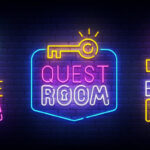
Using a Virtual Escape Room to Create Innovative, Student-Centered Digital Learning Experiences
A virtual escape room is a learning experience that challenges students to use their knowledge to solve riddles and puzzles with the goal of escaping

A virtual escape room is a learning experience that challenges students to use their knowledge to solve riddles and puzzles with the goal of escaping

Magna Publications © 2024 All rights reserved